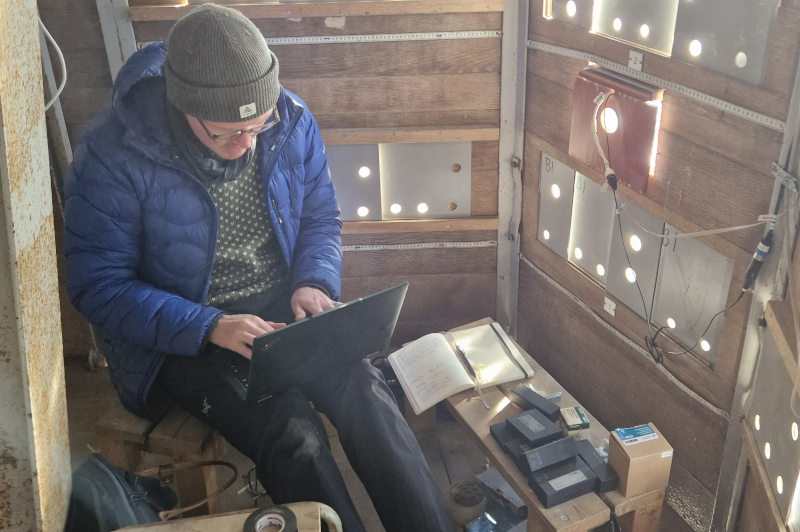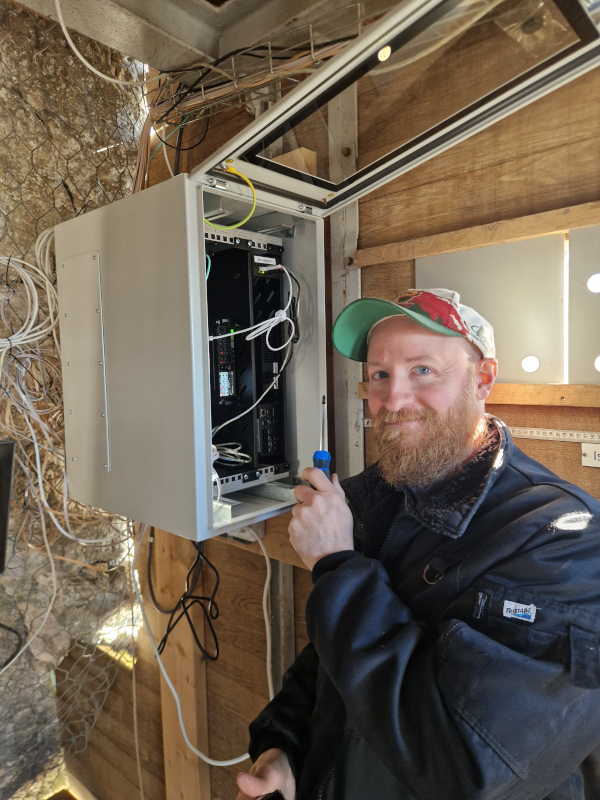Featured Project: Acoustic Monitoring of Guillemot Life at Stora Karlsö

Project actors: John Martinsson (RISE), Jonas Hentati Sundberg (SLU), Delia Fano Yela (RISE), Henrik Österblom (SU), and Olof Mogren (RISE)
Building upon the existing AI-driven seabird monitoring at Stora Karlsö, the AukLab project has recently expanded its sensory capabilities to include continuous acoustic recordings. Located on the island of Stora Karlsö, near Gotland, Sweden, the AukLab artificial rock shelf provides a unique platform for observing Common Guillemots up close. Previously featured for its pioneering use of AI and camera surveillance to document the seabirds’ breeding season, the project is now incorporating sound to gain an even richer understanding of these important marine life indicators.
This acoustic monitoring setup is carried out by John Martinsson, Delia Fano Yela, and Olof Mogren in close collaboration with Jonas Hentati Sundberg. Jonas has worked with the AukLab for several years and recently contacted the team at RISE which has now successfully deployed a permanent recording system on the island centered around three key components implemented on Raspberry Pi hardware:
- The Recording Pi: Manages the continuous capture of audio data from professional-grade DPA microphones via a multi-channel Zoom F8 Pro recorder.
- The Analytics Pi: Focuses on data integrity, facilitates real-time analyses, and handles secure archiving of the valuable audio recordings.
- The Clock Pi: Acts as the timing backbone, ensuring precise synchronization across all devices using GPS technology.

This synchronized system enables researchers to align guillemot vocalizations with the wealth of visual and behavioral data already being collected at the AukLab. By cross-referencing audio with existing video, thermal imaging, and individual bird identification data, the team aims to unlock deeper insights into guillemot social interactions, parental care strategies, and responses to environmental changes. The goal is to use automated bioacoustic analysis techniques (to a large extent built using machine learning) to uncover behavioral patterns that were previously hidden. For example, an important indicator of colony and ocean health is how many fishes they catch. The fish can often be observed on camera, but by linking the visual observations to the corresponding acoustic events, we may be able to detect fish arrival using only the microphones. This can give a more comprehensive understanding of what is happening and complement the cameras when the fish is not visible.
In the long-term, there may be a digital 3D representation of this artificial cliff on Stora Karlsö, incorporating audio, video, thermal, weather and different types of sensory data—enabling researchers without physical access to the colony to virtually step into the guillemots’ environment. Adding an acoustic sensory layer is a big step in this direction.
To explore the AukLab project further and view the 3D model of the artificial rock shelf, please visit the AukLab webpage: http://www.balticseabird.com/auklab/. You can also find more about the acoustic monitoring setup at John Martinsson’s research webpage: https://johnmartinsson.org.


